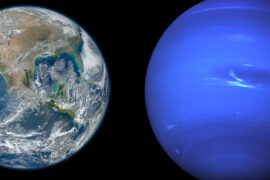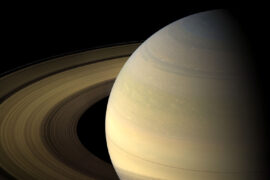Mars is going to be the first planet that humans will try to colonize. As such, it is the planet that astronomers and scientists have studied the most. They have found that the red planet has some interesting characteristics and it might be viable to build a colony and in the future, maybe even terraform it.
However, there is still a long way to go. A human hasn’t even landed on Mars yet.
Still, we have learned a lot about Mars, including plenty of information about its temperature and seasonal changes. In this article, we’ll answer the question “Is Mars hot or cold?” and learn more about this neighboring planet.
Factors that affect Mars temperatures
The temperature of a planet is determined by many factors, but these are the most important:
- Distance to Sun
- Composition
- Atmospheric density
- Reflectiveness
Let’s analyze these individually.
Distance from the Sun
Mars is the fourth planet closest to the Sun in the Solar system. It is located on average 226 million kilometers (140 million miles). For reference, that is about 50% farther away from the Sun than Earth.
As a result, Mars gets slightly less sunshine than our planet.
Composition
Saturn is a rocky planet with a solid surface like Earth. Both planets have a similar elemental composition with some differences in percentages and quantities.
For example, the reason why Mars is red is because the rocks on its surface contain a lot of iron that has developed rust over millions of years while Earth’s rocks have more carbon.
Atmospheric density
The Martian atmosphere is very thin. Astronomers believe it was denser at some point in its history, but lost it. This is one of the reasons why the planet can’t support liquid water on its surface.
Planets with atmospheres that are not very dense also have trouble retaining heat.
Is Mars hot or cold?
The short answer is that Mars is quite cold. At least much colder than Earth. The average temperature in the Martian surface is minus 62°C (minus 80°F). That is colder than the mean temperature in Antarctica.
Like on every other planet, the temperatures on Mars rapidly increase as you go down its layers and get closer to its core. Scientists estimate that the temperatures in the Martian core can reach 1,100°C (2,000°F).
Is Mars hotter or colder than Earth?
Mars is significantly colder than Earth. The mean temperature on Earth’s surface is 14°C (57°F). On the other hand, the mean temperature on the Martian surface is -62°C (-80°F), and that’s in the “warmer” areas. The temperatures in the poles can reach -153°C (-243°F). For reference, the coldest temperature ever recorded on Earth is -89°C (-128°F).
Even the Martian core is colder than Earth’s. The temperatures at the center of our planet are estimated to reach 5,200°C (9,392°F) while Mars’ core “only” reaches about 1,100°C (2,000°F).
Summary
- Mars is 50% farther away from the Sun than Earth and therefore receives much less sunlight.
- Mars is very cold. It is the coldest of the terrestrial (rocky) planets.
- Mars’ core is much hotter than the surface but it is still colder than Earth’s core.







